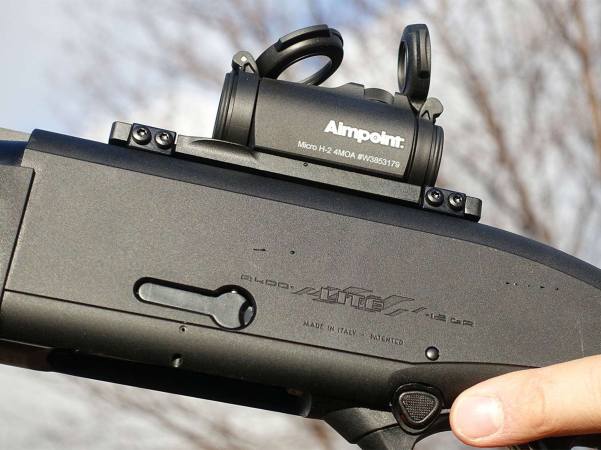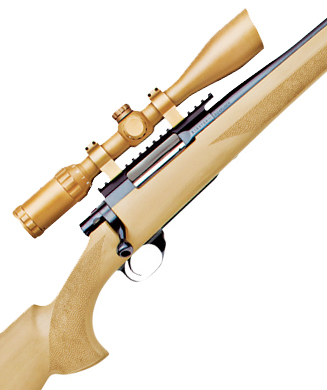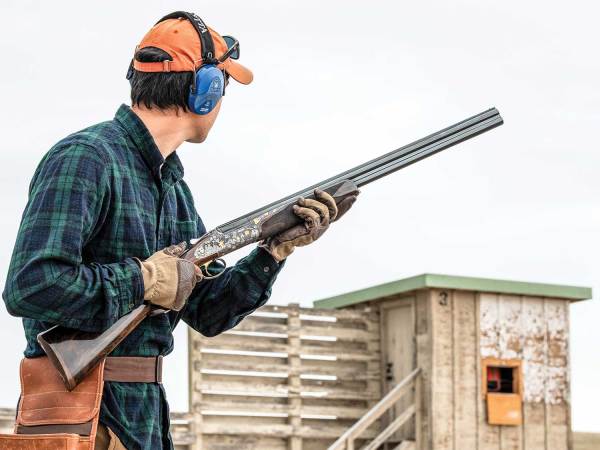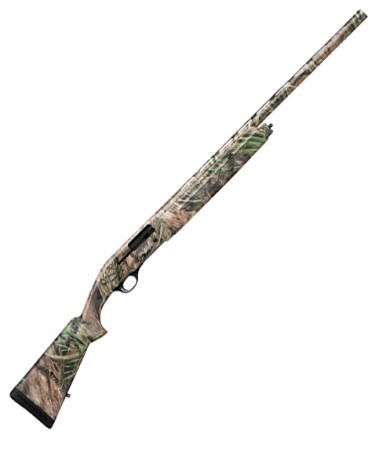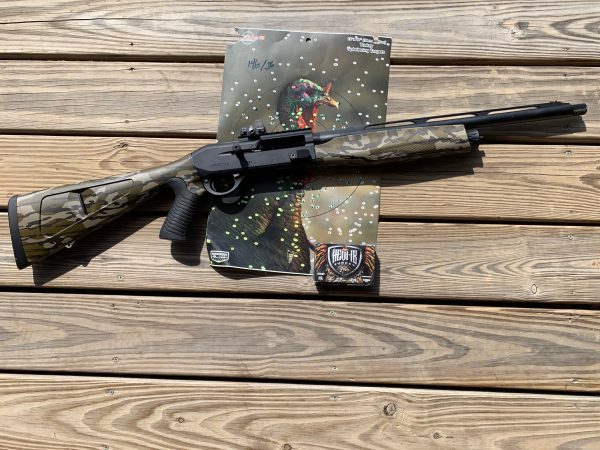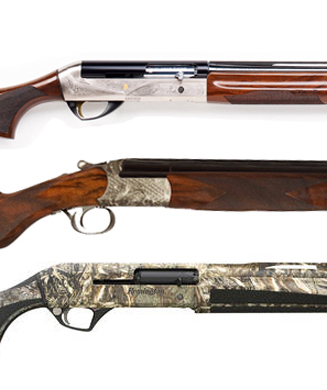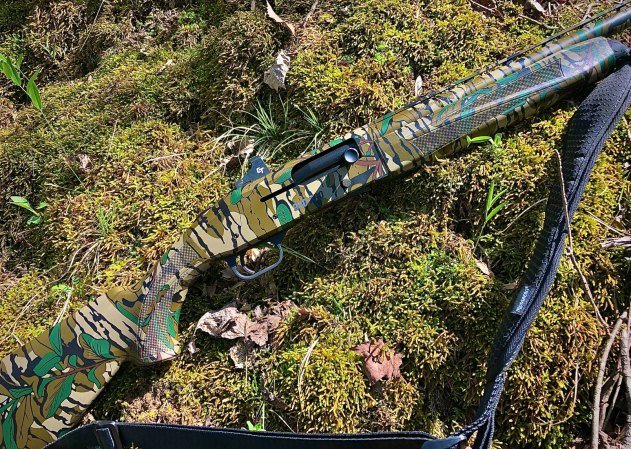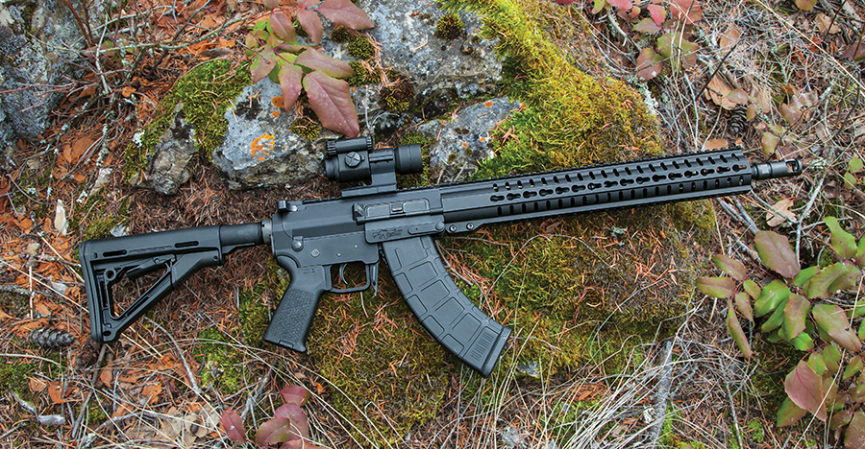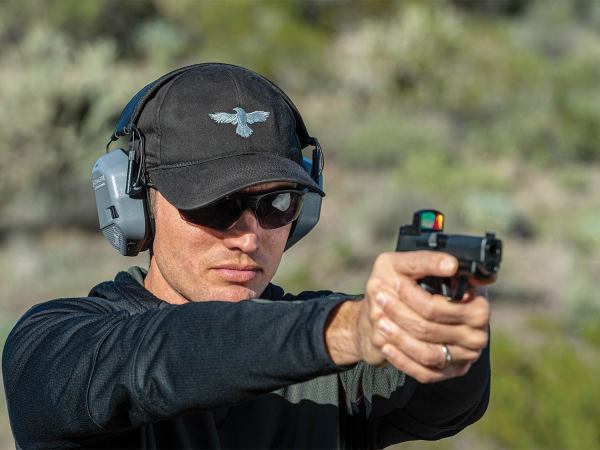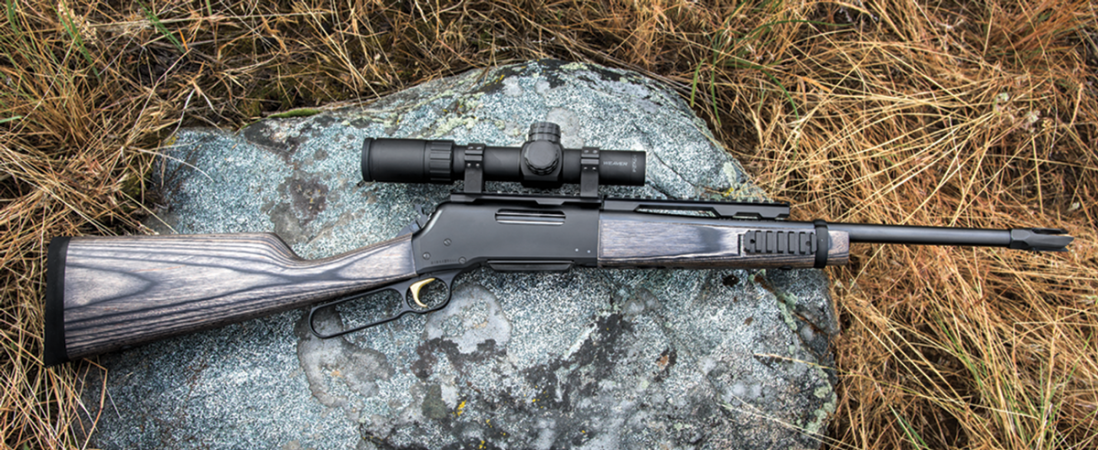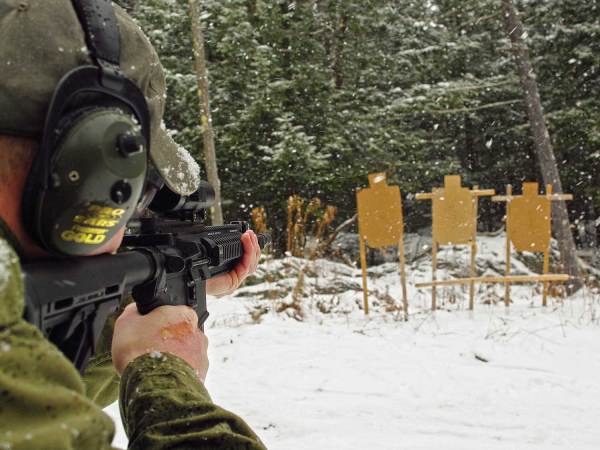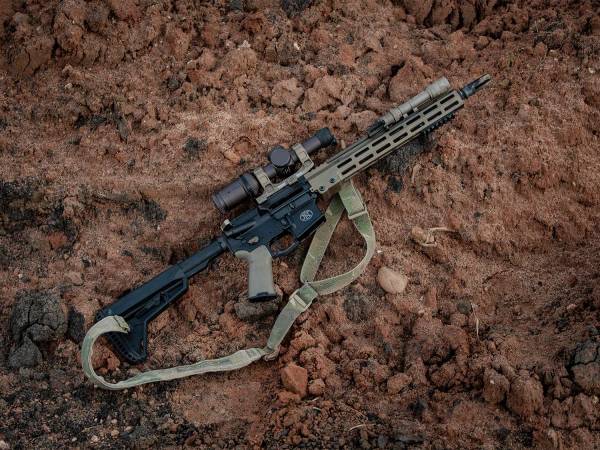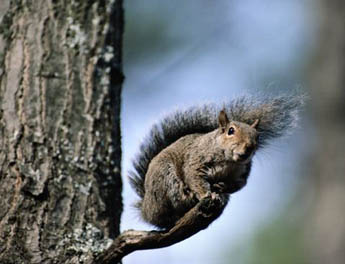We may earn revenue from the products available on this page and participate in affiliate programs. Learn More ›
I was very young. Ford’s Mustang was still just a sketch on a designer’s desk. In a cornfield up the road from my friend Harvey’s farm, Harvey and another hunting buddy, Bill, jumped a buck. Bill had a Browning autoloader, Harvey an 11-48 Remington. The Auto 5 was empty and Harvey was down to one slug when the buck went down at “147 paces.”
Unlike Harvey, who aimed with a bead that covered most of the buck and launched the equivalent of a shuttlecock down a slick bore, nowadays we put scopes on shotguns and fire flat-shooting bullets in sabot sleeves through rifled barrels.
Over the last 20 years, slug fodder has come and gone and you’ve had to buy a lot of ammo in order to keep a box of the latest and greatest in your hunting coat. Sights have kept pace, from the bird bead to barrel-top open sights to receiver-mounted apertures and scopes. Add red-dot sights, scopes with illuminated reticles and glow-worm iron sights to the mix.
Most of them are better than Harvey’s bead. But some are a lot better than others. It depends on where you hunt, the time of day you’re likely to get a shot, the accuracy range of your gun and the slug you use in it. Here are a few of my picks.
Wide Open
A leaf rear sight with a bead on a ramp is the simplest and cheapest arrangement. In fact, most slug barrels come equipped with “irons.” The open sight is not as fast as it looks, however, because your eyes have to focus on three points at once: the back sight, the front sight and the target.
Given a choice of open sights, I’ll pick one with a shallow V notch in the rear, because U and deeper V notches allow too much of the leaf to cover the target. A rounded bead up front reflects light to the bright side, drawing your eye away from the bead’s center.
Just a Peep
My first slug gun, an 870 Remington, wore a Williams receiver sight with a big aperture. It worked better than an open sight for two reasons. The sight radius, or distance between the front and rear sights, was longer, resulting in greater precision. And since I looked through the rear sight instead of at it, I had to focus only on the bead. Don’t worry about centering your vision in the aperture, because your eye automatically seeks the brightest place to bring the bead: the middle.
Though many aperture sights have gone the way of spoked wheels, Williams still sells its sturdy, adjustable 5D and other models. Another option from XS Sight Systems is the “ghost ring,” with a huge hole and thin rim. It’s a commercial rendition of an aperture sight with the disk removed, a trick favored by hunters who want more speed at the cost of precision. The best front bead for apertures is the same as for notched sights.
Scopes Are In
Shotgunners used to scoff at the notion of mounting a scope on a slug gun. The slug’s effective range was short, and snap-shooting was routine. The reason many deer hunters now choose scopes is because modern slug guns are more accurate and capable of taking game at ranges once considered improbable. Scopes are more accurate than irons at all ranges and, believe it or not, faster even up close. With a scope, the target and reticle appear in one plane, both tack-sharp. Paste the reticle where you want to hit, and shoot. For long pokes, the scope allows you to see targets in detail and shoot a shade high with precision. Modern shotgun scopes weigh just half a pound or so and deliver bright images. Forget about fogging and mechanical failure. Reticle choices, including illuminated versions, abound. All told, a scope is probably your best slug gun sight.
Don’t over-scope yourself. Keep in mind that a deer is easy to see with your naked eye at 50 yards. At 125 yards, farther than most whitetails are shot with slugs, a 2.5X scope gives you the same image. Low power delivers a wider, brighter field than high power. I think a 2.5X scope is ideal for a slug gun, preferable even to a variable. You don’t need more power, and with less, the image of the barrel intrudes into your sight picture. A 2.5X scope can be made lightweight and sturdy. It also costs less than a variable. Sadly, variables are so popular that many 2.5X models and Leupold’s fine 3X have been dropped. If you must have a variable, pick one with a high end of 4X or 5X and a straight front tube. Objective bells add unnecessary bulk and may mandate higher mounts. Check the eye relief before you buy. A scope should provide at least 3 1/2 inches of eye clearance for quick aim and to protect you from the recoil of slug loads in lightweight guns.
Five of my favorite shotgun scopes, which weigh 10 ounces or less each, include the Burris Fullfield II 2.5×20; Leupold Compact 2.5×20; Nikon Monarch 1.5-4.5×20; Sightron Shotgun 2.5×20 and Weaver K2.5×20.
Seeing Red
In 1975 Gunnar Sandberg, a Swedish inventor, came up with an optical sight that featured a floating red dot. With this “single-point sight” you saw a red dot with one eye and the target with the other. Sandberg’s Aimpoint facility was soon spitting out improvements: windage and elevation adjustments, a rheostat to change dot brightness, coated lenses and magnification. Red-dot sights became an industry unto themselves when Japanese versions appeared. As with scopes, however, all red-dots are not equal in quality. Low-end models have a single lens up front to reflect the dot produced by a diode in the bottom rear of the tube. But the reflective paths spread fanlike as the eye shifts position behind the sight.
Aimpoint’s current flagship, the 7000, has a compound lens that brings the dot to your eye in a line parallel with the optical center of the instrument, so there’s no parallax problem at any range. Wherever your eye is behind an Aimpoint or a sight of equivalent quality, you’ll hit where the dot appears to be. Except in models with magnification, the best red-dot sights impose no limits on eye relief. Your eye can be 2 inches back, or 10. Field of view with red-dot sights, incidentally, is smaller than that of same-power scopes. But this is no handicap; at 1X or 2X you have ample field.
A red-dot sight can be used with both eyes open, in part because the field border is just a narrow shadow caused by the sight’s body. Even at 1X, the dot gives you plenty of precision for 150-yard shots, presuming you also have a gun that can handle that range.
The most popular alternative to a red-dot sight is Bushnell’s HoloSight, a compact unit whose holographic projection of the target/reticle image differs mechanically from the optical transmission in a red-dot sight. Interchangeable reticles make it versatile and it weighs just 6.4 ounces. Besides the Aimpoint 7000 and Bushnell HoloSight, the Nikon VSD, with a knob to change dot size, rounds out my top three picks.
Lightening Things Up
In woodland shadows or at dawn or dusk, sights that glow are easier to see against the target. Open sights with fiber-optic tubes or fluorescent paint speed your aim but give no boost in precision. In fact, a target that’s poorly defined can be even harder to discern behind bright sights.
When using a red-dot sight in low-light conditions, keep the rheostat turned as low as practical. In dark conditions, use a bottom setting. In sunlight, you’ll need more wattage to see the dot. The brighter the dot, the less accurate the shot.
Battery life varies among red-dot sights and the batteries used to power them. The Aimpoint 7000 boasts a diode that offers 20 times the battery life of many LEDs; the 3V lithium camera battery delivers a visible dot for 20,000 hours on the low setting. Other sights drain a battery in 40 hours. Timed switches that turn off after a few hours of non-use make sense.

